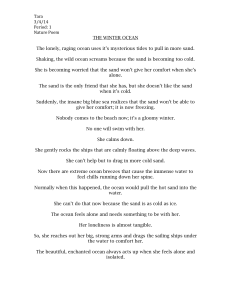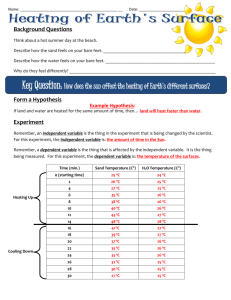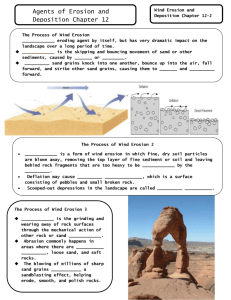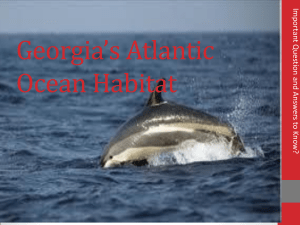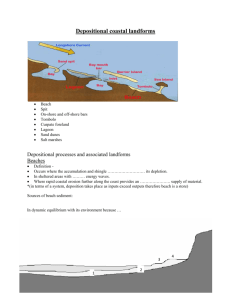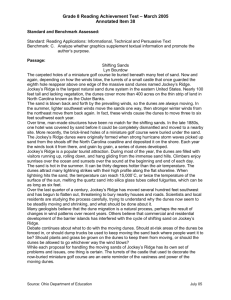Piedmont habitat
advertisement
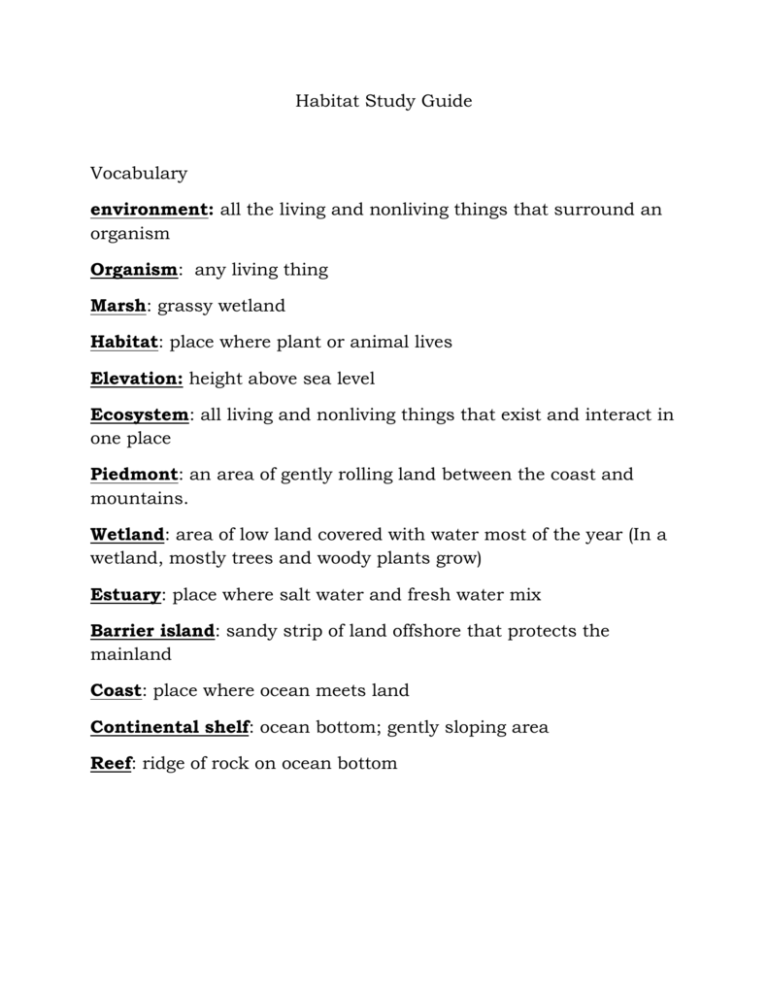
Habitat Study Guide Vocabulary environment: all the living and nonliving things that surround an organism Organism: any living thing Marsh: grassy wetland Habitat: place where plant or animal lives Elevation: height above sea level Ecosystem: all living and nonliving things that exist and interact in one place Piedmont: an area of gently rolling land between the coast and mountains. Wetland: area of low land covered with water most of the year (In a wetland, mostly trees and woody plants grow) Estuary: place where salt water and fresh water mix Barrier island: sandy strip of land offshore that protects the mainland Coast: place where ocean meets land Continental shelf: ocean bottom; gently sloping area Reef: ridge of rock on ocean bottom Piedmont habitat: Georgia’s Piedmont covers most of North central part of the state. It’s hilly region with many rivers and streams. The rivers move slowly and are often muddy. It is warm in the summer and cool in the winter. Forests of oak, hickory and pine are located here. There is plenty of water and shelter for plants and animals to survive. Mountain: 2 mountain regions located in Georgia 1. Applachian Plateau Region 2. Blue Ridge Mountain Region The temperature is often cool and windy due to it’s elevation. It is often very wet. Highest Mountain in Georgia is Brasstown Bald. The thick forest provides shelter for deer, rabbits, and bears. The soil on the lower part of the region is moist and contains lots of nutrients. Large forests grow here and are homes to many plants and animals such as whitetail deer, squirrels, and foxes. The top of the region is dry and rocky. Plants must be able to survive in cool, windy weather. Animals that lives here have thick fur to keep them warm. (Example: black bear) Swamps/Marshes: (wet environments) Swamps and Marshes can contain fresh and salt water. Georgia’s Okefenokee Swamp is the largest freshwater swamp in North America. Trees and other woody plants grow in swamps. Grasses grow in marshes. Most common salt water grass is called cord grass. Fish, snails, crabs, and mussels use salt marsh grasses for shelter. Marshes act as sponges soaking up heavy rain that flood the land around them. Barrier Island: Georgia has 14 major barrier islands. These islands block damaging winds and ocean waves from Georgia’s estuaries, salt marshes and mainland. Without barrier islands, winds and waves would carry away sand and soil from coastal land. Coast: Made up of sandy beaches. The beaches are homes to many living things. Many birds and loggerhead turtles make the coast their home. Loggerhead turtles lay their eggs in the sand. A dune is a mound of sand formed by wind and moving water. The roots of sand dunes help trap and hold the sand dune in place. Sand dunes protect the inland areas from wind, ocean waves and spray. The sand dunes are habitats for birds and ghost crabs. The sand dunes have a harsh environment and must be able to survive salt spray, poor soil, and constant winds. Sea oats grow well in sand dunes. Beaches often have sand dunes. Ocean Life / Atlantic Ocean: The ocean is made up of many kinds of habitats. The continental shelf has 2 habitats. The first is the sandy bottom where few plants and animals live. The second is the live bottom habitat or reef. In reefs, corals and sponges attach to the rocks. Their bodies provide places for other animals to live and hide. Gray’s Reef is an example of live bottom habitat. Logger head turtles, right whales, many kinds of fish, crabs, lobsters, sea stars and shrimp live in the reef habitat.
